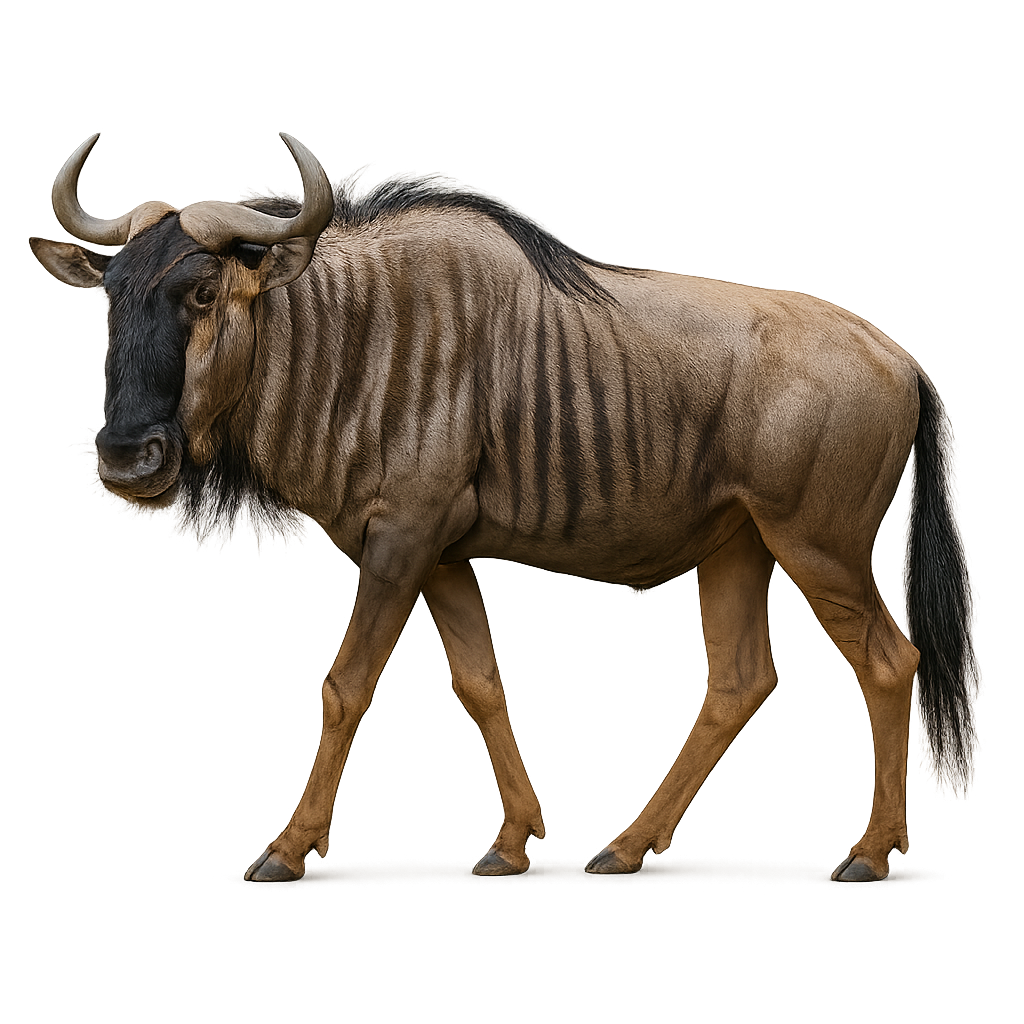Your wildlife photography guide.
Explore the blue wildebeest in detail, study its behavior, prepare your shots.
Where to observe and photograph the blue wildebeest in the wild
Learn where and when to spot the blue wildebeest in the wild, how to identify the species based on distinctive features, and what natural environments it inhabits. The WildlifePhotographer app offers tailored photography tips that reflect the blue wildebeest’s behavior, helping you capture better wildlife images. Explore the full species profile for key information including description, habitat, active periods, and approach techniques.
Blue Wildebeest
Scientific name: Connochaetes taurinus

IUCN Status: Least Concern
Family: BOVIDAE
Group: Mammals
Sensitivity to human approach: Suspicious
Minimum approach distance: 50 m
Rut period: February to March
Gestation: 240-260 jours
Births: September to November
Habitat:
Grassy savannas and floodplains
Activity period :
Primarily active during the day, with peak activity in the morning and late afternoon.
Identification and description:
The Blue Wildebeest is a large herbivorous antelope, easily recognizable by its massive body, imposing head, and black mane. It stands about 1.3 to 1.5 meters at the withers and typically weighs between 150 and 250 kg. Its coat is generally grayish-blue, with black markings on the head, legs, and shoulders. The Blue Wildebeest has curved horns that can reach 80 cm in length. It primarily inhabits the savannas, grasslands, and woodlands of Southern Africa, notably in South Africa, Botswana, and Namibia. Herbivorous, the Blue Wildebeest mainly feeds on grasses and low vegetation, often seen in large herds in open plains. It is commonly seen during large migrations, moving in search of food and water. While the species is not currently endangered, it faces risks related to habitat loss and hunting.
Recommended lens:
300 mm – adjust based on distance, desired framing (portrait or habitat), and approach conditions.
Photography tips:
Approach slowly and quietly, using a telephoto lens to avoid disturbing the blue wildebeest, a relatively alert and reactive animal.
Photograph early in the morning or late afternoon, when the light is soft and wildebeests are active—often grazing or moving in herds across open grasslands.
Capture natural behaviors: group movements, social interactions, and grazing moments offer dynamic photo opportunities.
Be patient and respectful wait for natural activity without causing stress.
IUCN status: Least Concern. Respect their habitat and follow local conservation guidelines.
The WildlifePhotographer App is coming soon!
Be the first to explore the best nature spots, track rutting seasons, log your observations, and observe more wildlife.
Already 1 430 wildlife lovers subscribed worldwide

